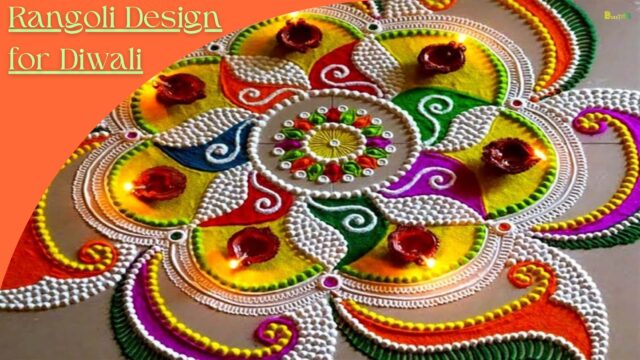The festival of lights known as Diwali is a time for celebration, amusement, and coming together. Making lovely rangoli patterns is one of the most appreciated customs during this important occasion. These vibrant designs serve as gateway decorations as well as symbols of prosperity and fortune. We’ll examine several Rangoli Design for Diwali – patterns and styles in this post that you can utilize for your Diwali celebrations.
The Significance of Rangoli in Diwali
Rangoli is greatly revered during the Diwali festivities. Inviting the goddess Lakshmi, who brings wealth and prosperity, into households is supposed to have this impact. The vibrant hues and exacting designs act as a way to show gratitude and welcome happiness.
Traditional Rangoli Design for Diwali
Floral Elegance

Traditional rangoli patterns frequently feature the idea of floral elegance. These Rangoli Design for Diwali exquisite floral designs stand out because they have a colorful variety of flower petals, greenery, and other floral components. The painstaking arrangement of these organic components, which results in a fascinating and colorful sight that perfectly captures the beauty of nature, is where the artistry lies.
Peacock Extravaganza

Rangoli Design for Diwali with peacock themes are lovely to look at. They include the stately and lovely peacock, an image of elegance and grace in Indian culture. The intricately carved themes and exquisite peacock feather designs in these rangolis perfectly convey the spirit of this magnificent bird. This artwork is highly alluring due to its vivid colors and fine details.
Diya and Swastika Motifs
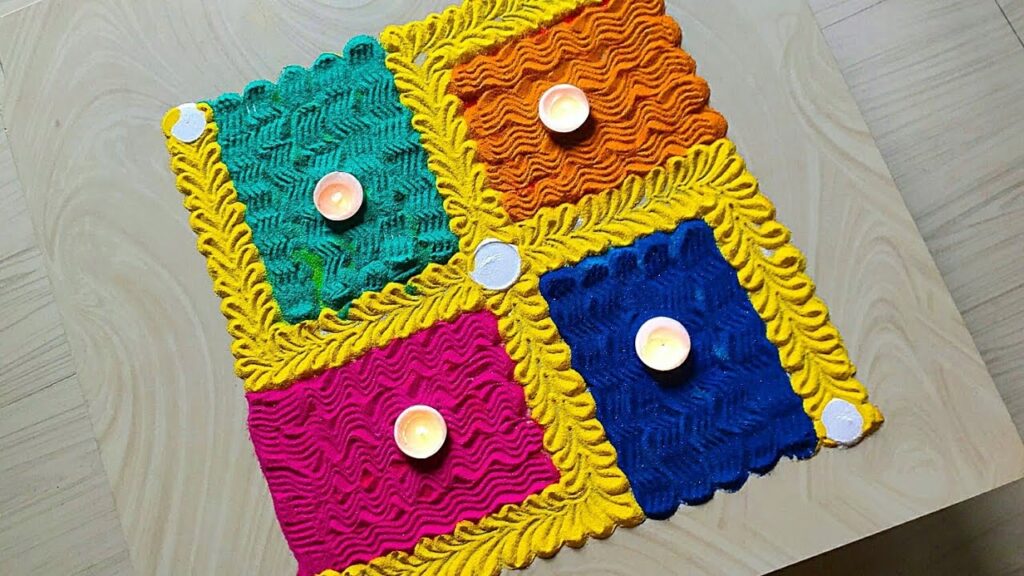
The Swastika and Diya designs used in rangoli art are frequently linked to the Diwali festival of lights. Oil lamps, or diyas, stand for the triumph of light over darkness. Swastikas are signs of fortune and wealth. These rangolis, which exude blessings and positivity, perfectly capture the spirit of Diwali.
Geometric Symmetry
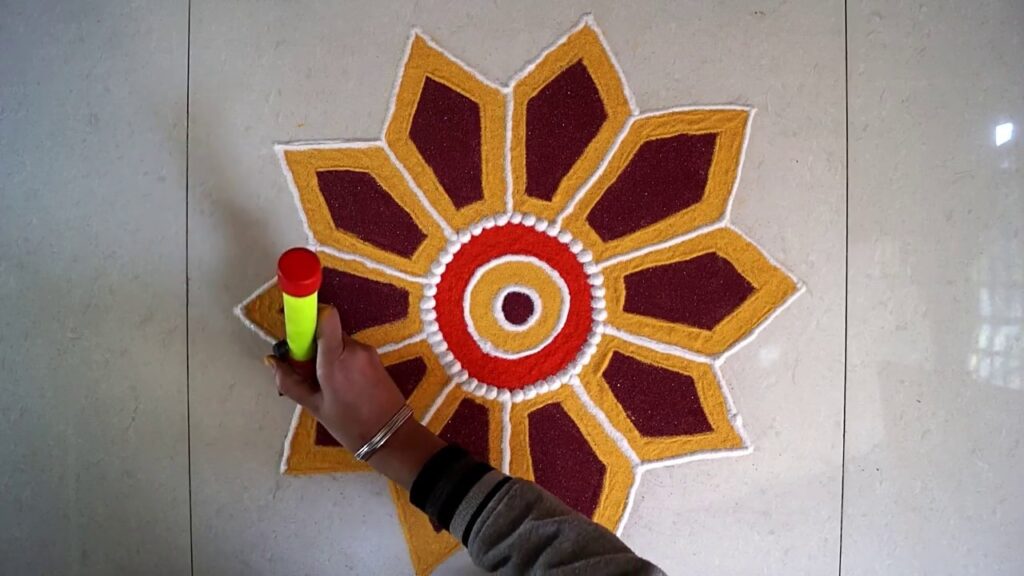
Beautiful geometric rangoli designs exhibit balance and accuracy. To construct their elaborate geometric shapes, these rangolis use carefully calculated lines, curves, and angles. The rangoli is more remarkable due of the symmetrical arrangement of its many components, which gives it an aesthetic appeal.
Fusion of Cultures
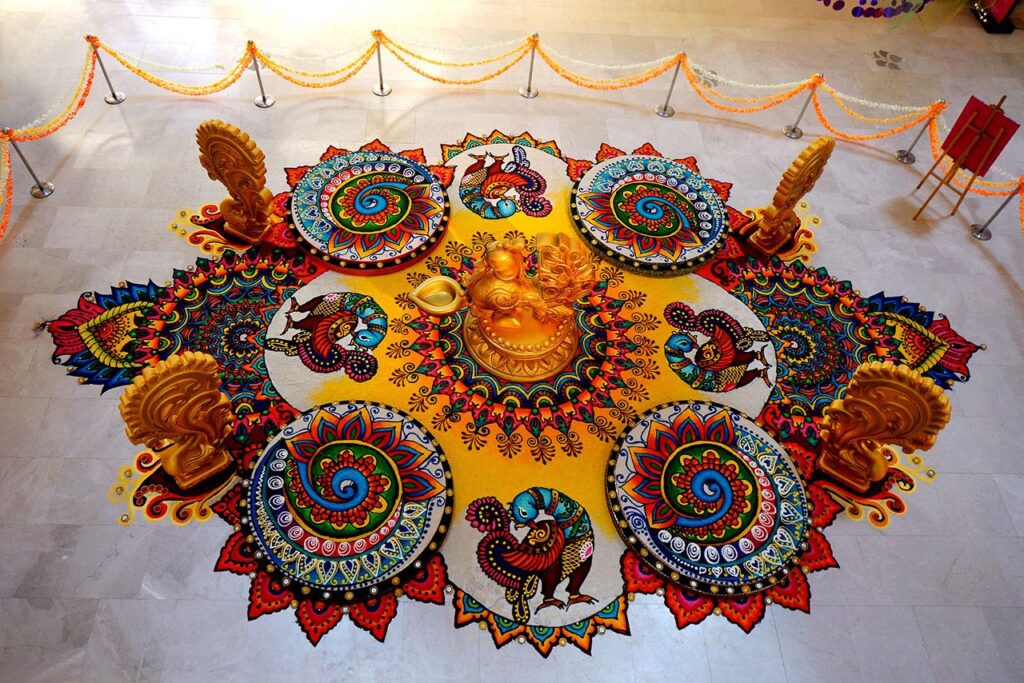
As rangoli art has developed, various civilizations have been incorporated. These rangolis create one-of-a-kind, eclectic works of art by fusing traditional elements with modern themes. They frequently demonstrate how ancient patterns and contemporary art may coexist, demonstrating how adaptable rangoli is as an art form.
Mandala Magic

Mandala-inspired rangolis are inspired by mandalas’ spiritual significance. Mandalas stand for harmony, fulfillment, and serenity. Intricate geometrical circular motifs are typically used in this particular rangoli form. Making a mandala Rangoli Design for Diwali encourages harmony and peace.
Starry Night

Starry night-themed rangolis match the Diwali décor well. The crescent moons and stars in these rangolis give them a celestial look. The rangoli is pleasing to the eye because to the combination of light and dark colors in these designs.
Paisley and Vine Motifs
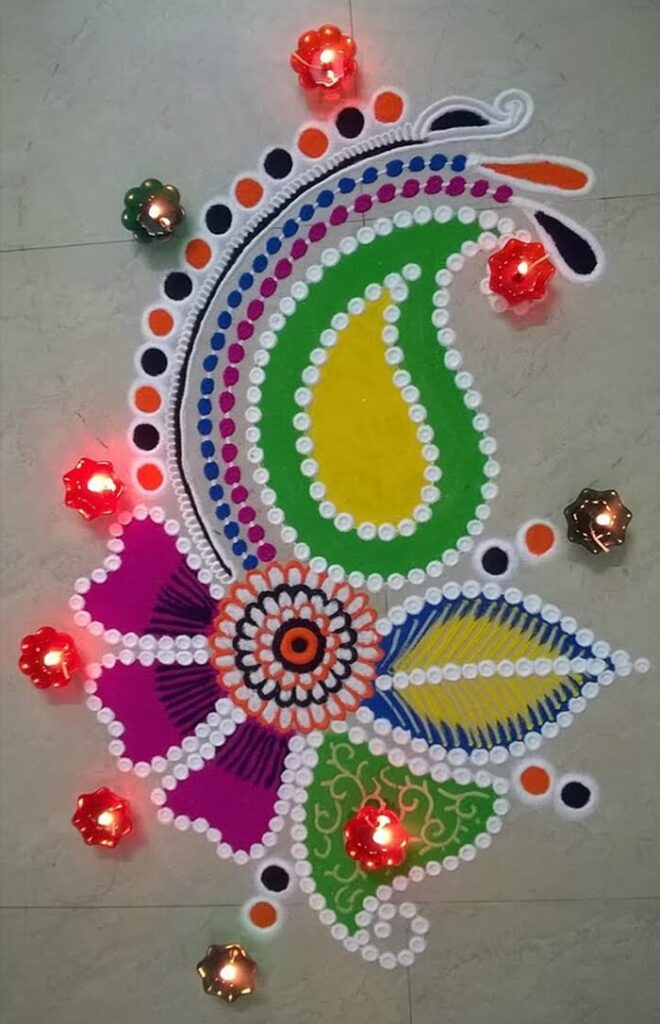
Indian traditional art is known for its use of paisley motifs. There is a grace and beauty to paisley-patterned rangolis that are weaved with flowing vines and leaves. The rangoli is transformed into a work of art by the precise creativity of these patterns.
Lord Ganesha Rangoli

In Indian tradition, Lord Ganesha is revered as the remover of barriers. Lord Ganesha is frequently surrounded by elaborate patterns and floral motifs in rangoli creations. These rangolis are an offering to Lord Ganesha in thanks for prosperous beginnings.
Lakshmi Charan Rangoli
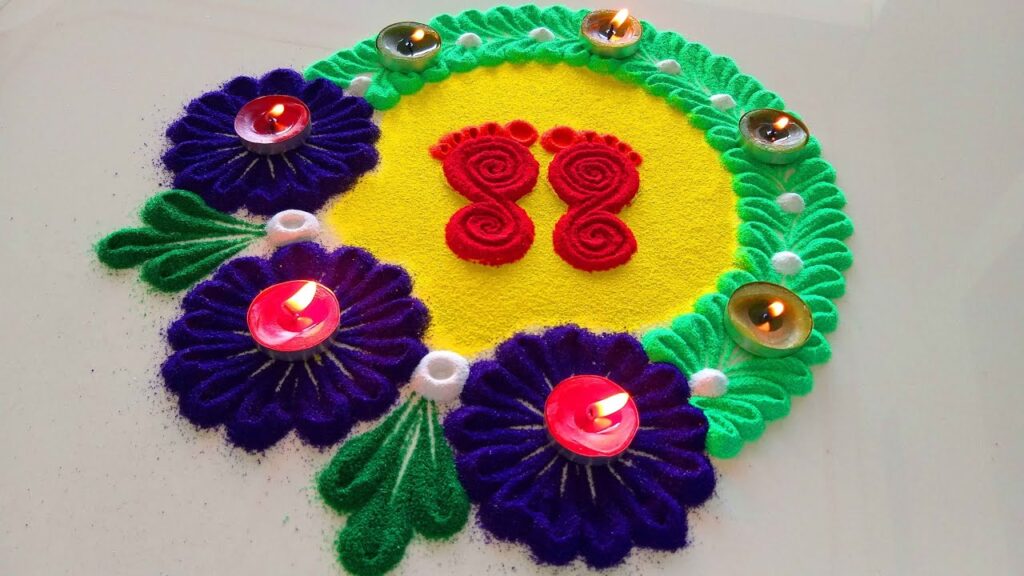
A typical motif in rangoli art is the footsteps of Goddess Lakshmi, the deity of wealth and happiness. These rangolis frequently have ornate patterns and symbols to go along with the intricately decorated footsteps. They stand for inviting the goddess into one’s home and requesting her favor in acquiring wealth.
The traditional rangoli designs are an essential component of Indian festival celebrations since they not only display the talent of the painters but also have profound cultural and spiritual significance.
Contemporary Rangoli Design for Diwali
Fusion of Cultures
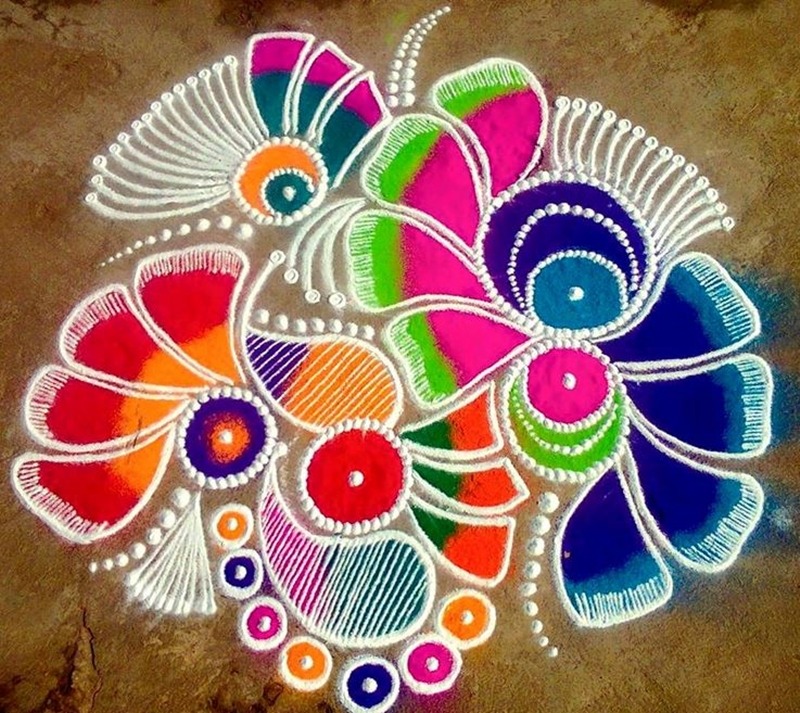
Modern art forms are commonly included into contemporary rangoli designs, creating a distinctive fusion of cultures. Through the seamless blending of traditional patterns and modern themes, these rangolis show how this ancient art form is constantly developing.
Mandala Magic
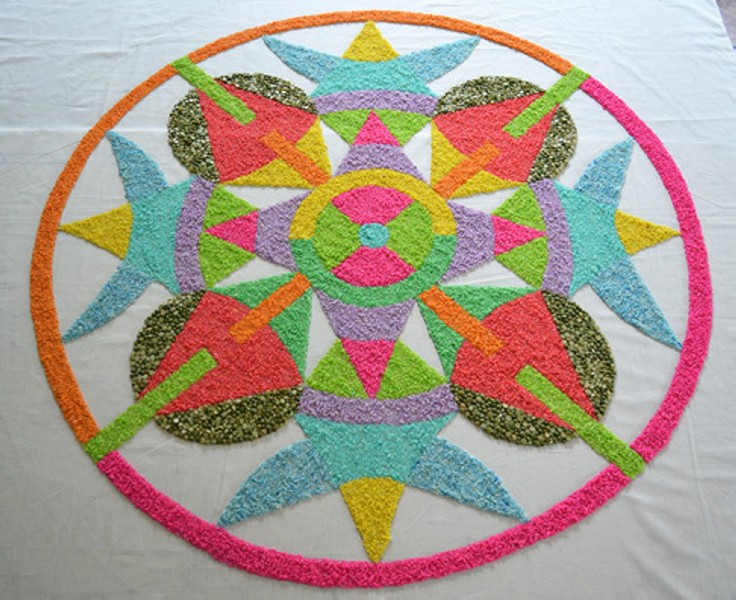
Modern mandala rangolis have intricate circular patterns with geometric shapes and motifs because of the spiritual significance of mandalas. They are a popular choice for contemporary rangoli interpretations because they offer serenity, equilibrium, and a sense of connection.
Starry Night

Rangolis with a starry night theme add a cosmic touch to the festive decor. These images capture the magnificent atmosphere of a starlit night sky using glistening stars, crescent moons, and other celestial objects.
Abstract Artistry
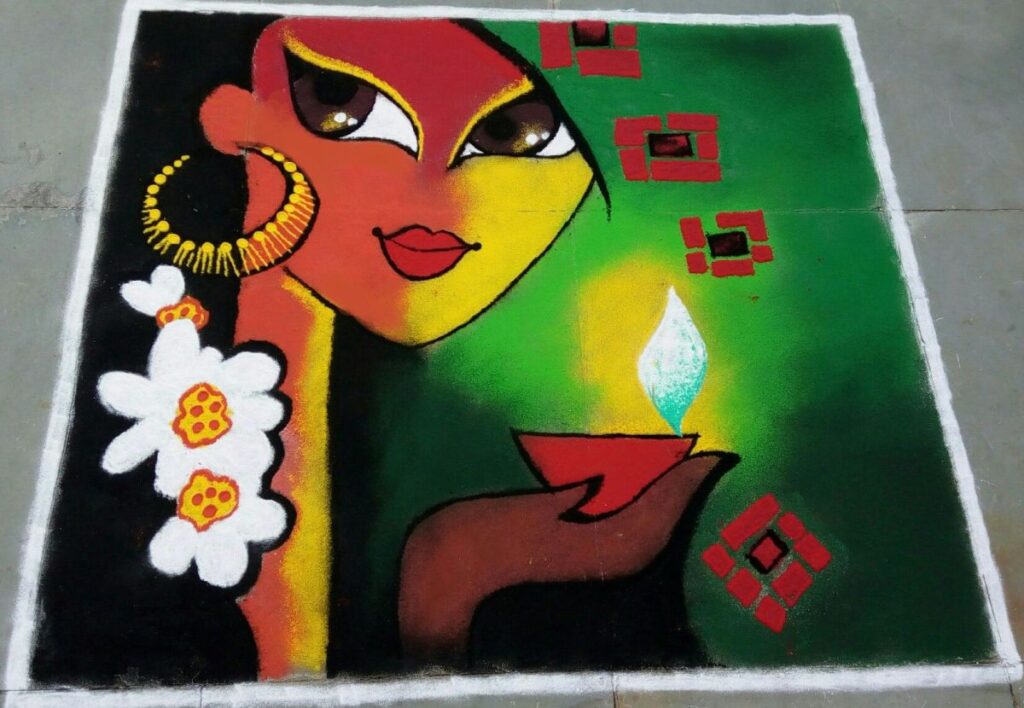
In their eye-catching creations, contemporary rangoli artists frequently explore with abstract designs, using amorphous lines, figures, and patterns. These rangolis demonstrate the infinite potential of the art form by inspiring a sense of creativity and self-expression.
Minimalistic Elegance:
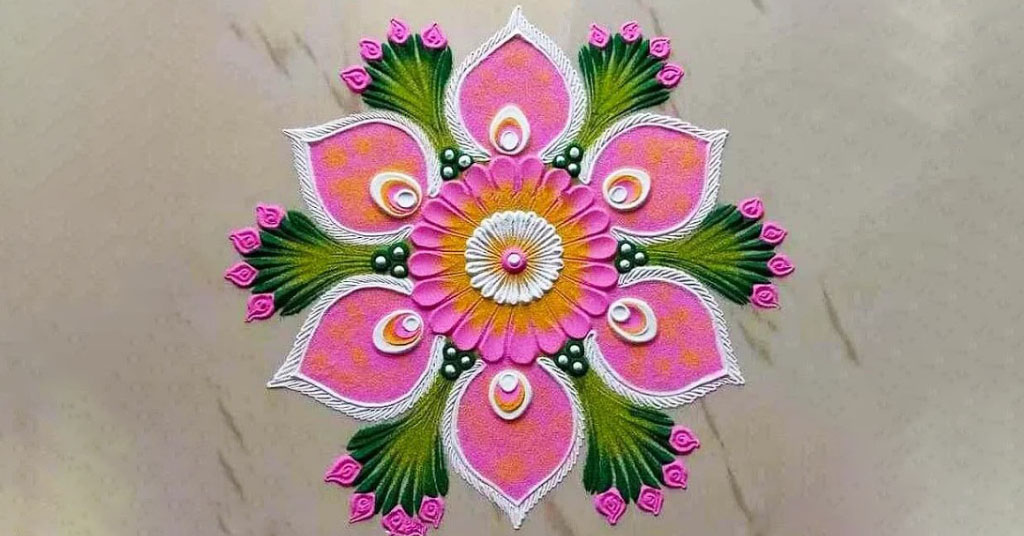
The proverb “less is more” is adopted by minimalistic rangoli patterns, which emphasize simplicity and clarity. These rangolis have a refined and modest aesthetic appeal due to their straightforward designs and restrained color choice.
Digital Rangoli Art
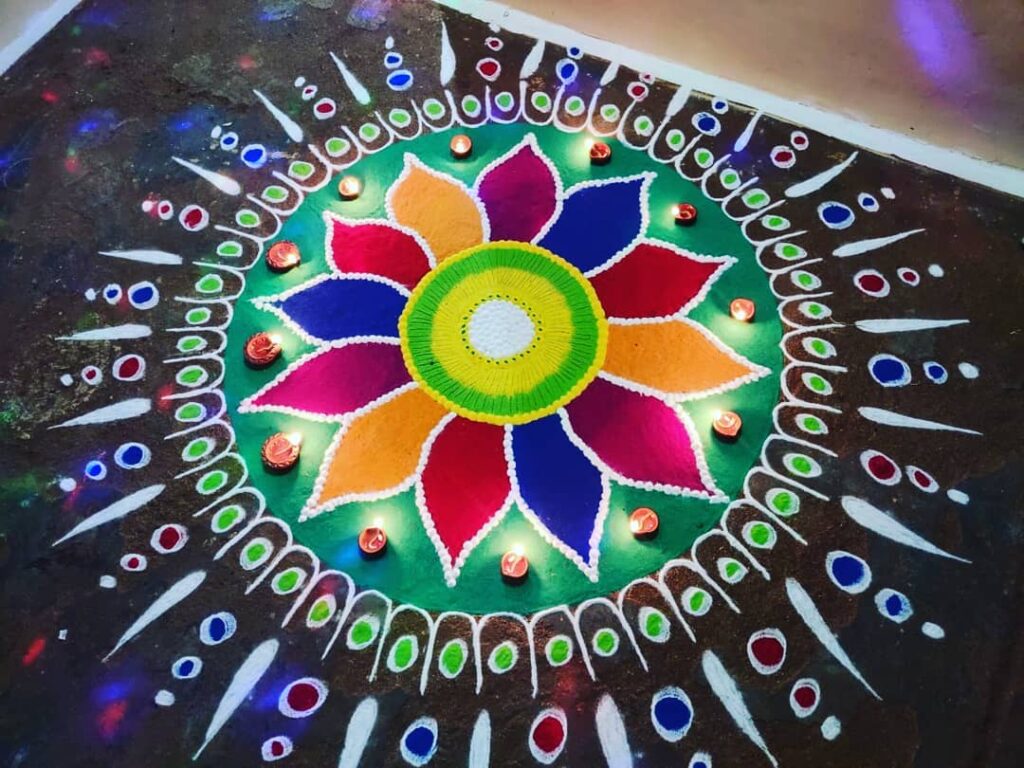
Using graphic design software, some artists now create digital rangoli patterns in the era of technology. These intricate digital pieces of art can be reproduced to cover walls or watched on screens. They add a contemporary spin to this age-old art form.
Mixed Media Rangolis
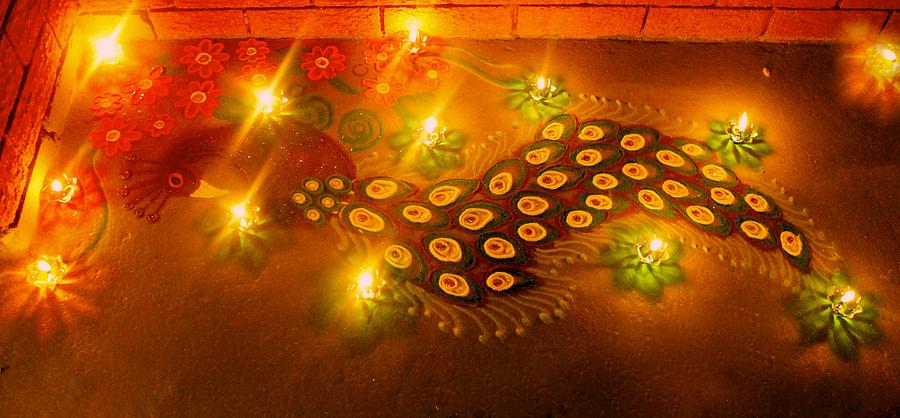
In addition to the conventional rangoli powders, contemporary artists explore with a variety of other materials, including bright sand, flower petals, beads, and even strange components like sequins or buttons. This creative method gives the designs weight and depth.
Illusionary Rangolis:
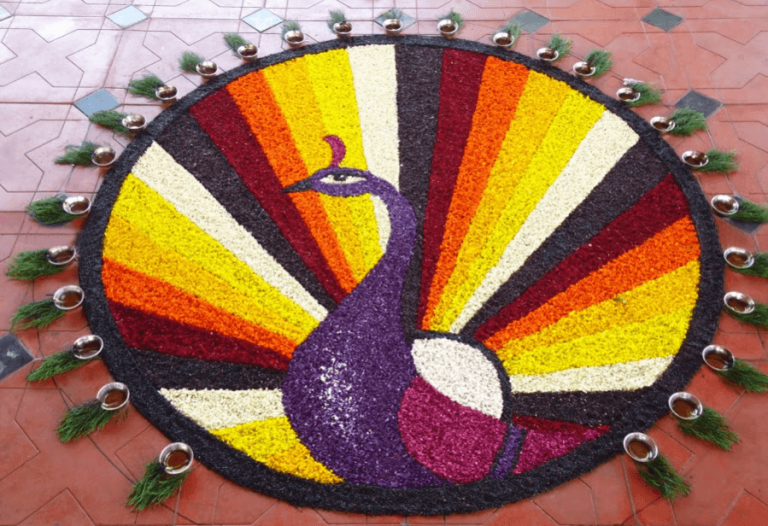
By playing with optical illusions, these designs produce three-dimensional effects that seem to jump out of the surface. Illusionary rangolis defy conventional understandings by meticulous coloring and layering, astonishing observers.
Interactive Rangolis:

There are components in several modern rangolis that invite audience participation. For instance, when viewed through a smartphone app, these rangolis use augmented reality (AR) technology to come to life, providing a captivating and immersive experience.
Environmental Rangolis:
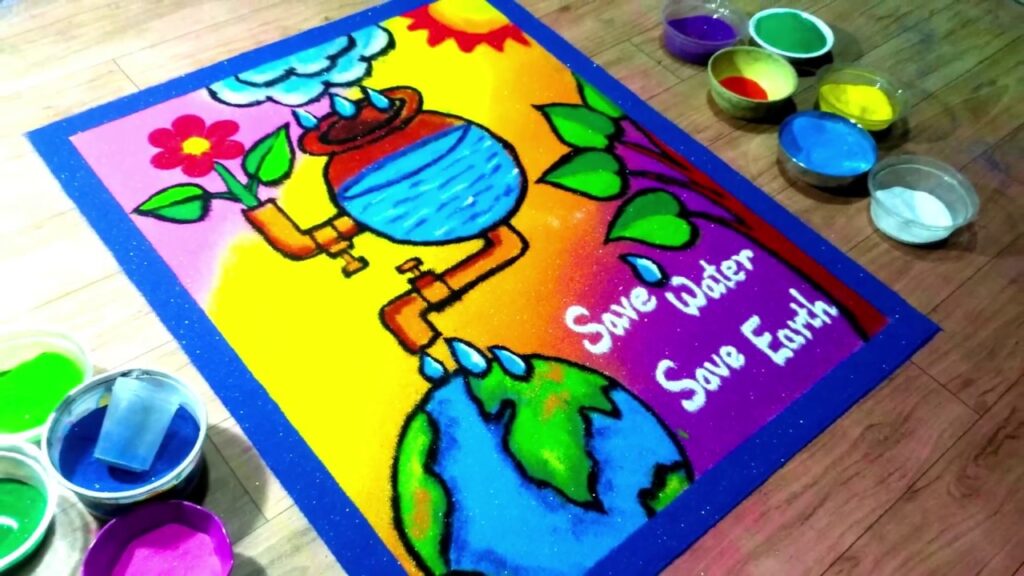
Modern artists construct rangolis with an emphasis on sustainability by utilizing natural materials like leaves and flowers, rice flour, organic colors, and these things. These environmentally conscious designs appreciate nature while also increasing public awareness of environmental issues.
These modern rangoli designs demonstrate the ingenuity and inventiveness of their designers while also demonstrating the development of this old art form. They demonstrate the rangoli’s lasting appeal and versatility in the varied and increasing aesthetic environment of the modern world.
DIY Tips for Creating Stunning Rangoli Designs
Select the Right Materials
It’s crucial to select materials for rangoli projects that will improve aesthetics and speed up the creative process. Excellent substitutes include vivid rangoli powders, finely sifted sand, or even natural elements like flower petals. Rangoli powders are available in a wide range of vibrant hues, enabling fine detailing and a dazzling, rich finish.
A flat surface for complicated patterns is provided by readily available fine sand. Instead, by including flower petals in your rangoli, you can give it a special, organic touch and let the beauty and fragrance of nature fill the space.
Practice Freehand Drawing
Accuracy is essential for producing beautiful rangoli designs. To do this, begin by lightly drawing the design’s outlines on the surface of your choice. To help you maintain balance and proportion as you add color, use this simple drawing as a guide.
You can make changes and modifications before committing to the final design by starting with a freehand drawing. It’s an essential step that guarantees your rangoli’s attractiveness.
Experiment with Color Combinations
The overall impact of your rangoli can be greatly influenced by the color palette you choose. Consider experimenting with contrasting color combinations to help your design stand out. Contrast heightens aesthetic appeal and draws attention to the pattern’s intricate details.
Complementary color combinations, such as blue and orange or red and green, can have a startling visual effect. To give your rangoli depth and personality, you can also experiment with several tints and tones of a single color.
Keep in mind that each of these suggestions will help your rangoli turn out successfully in the end. You’ll be well on your way to producing a stunning and visually captivating rangoli design by picking your materials with care, practicing freehand sketching, and experimenting with colors.
Rangoli-Making as a Family Activity
Families may interact and have fun being creative by creating rangolis together. This undertaking goes beyond simple artistic production. You foster peace and goodwill by involving your family in the making of rangolis.
To produce a masterpiece that showcases the family’s collective intelligence, each member can add their own skills and imaginative ideas. The operation turns into a joyful memory that is punctuated by laughter, conversation, and a sense of accomplishment.
Passing Down a Tradition:
Making rangolis is a beloved tradition with aesthetic and cultural importance. You are passing down a lovely tradition and fostering cultural pride and heritage in the next generation by teaching them how to make rangolis.
Children get a wonderful chance to reconnect with their heritage and learn more about the art form. Students become the custodians of a timeless heritage, ensuring its preservation for future generations, as they master the methods and symbolism of rangoli.
Making rangolis as a family involves more than just aesthetic beauty; it also fosters creativity, protects cultural history, and results in enduring memories. Everyone engaged truly benefits from the experience since it deepens family bonds and promotes a sense of cultural identity.
Conclusion
Not only are rangoli designs lovely, but they also have a significant symbolic meaning. They beautifully capture the vivid colors, intricate patterns, and spiritual symbolism of the rich Indian cultural fabric.
Each arc and line of a rangoli embodies the essence of time-honored customs and principles. These decorations are utilized during Diwali celebrations to transform dwellings into colorful canvases and to infuse them with a palpable feeling of creativity and passion.
They design a warm atmosphere that welcomes prosperity and uplifting energy. Making rangolis for Diwali is, in essence, more than just a beautiful activity; it develops people’s spiritual and cultural ties to one another, to their ancestors, and to the auspicious holiday of Diwali. It highlights the lasting value of this historic art form in modern celebrations.

